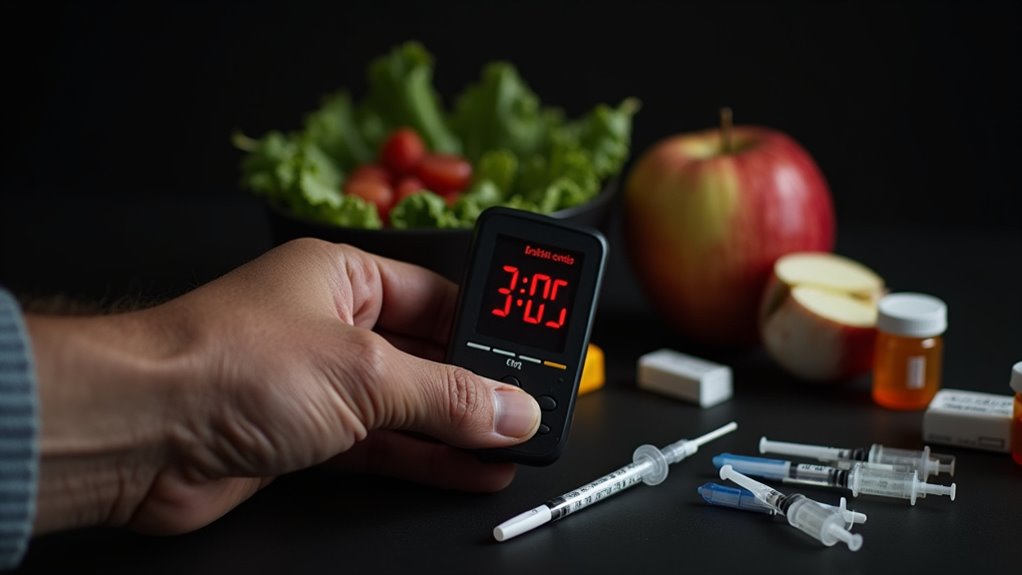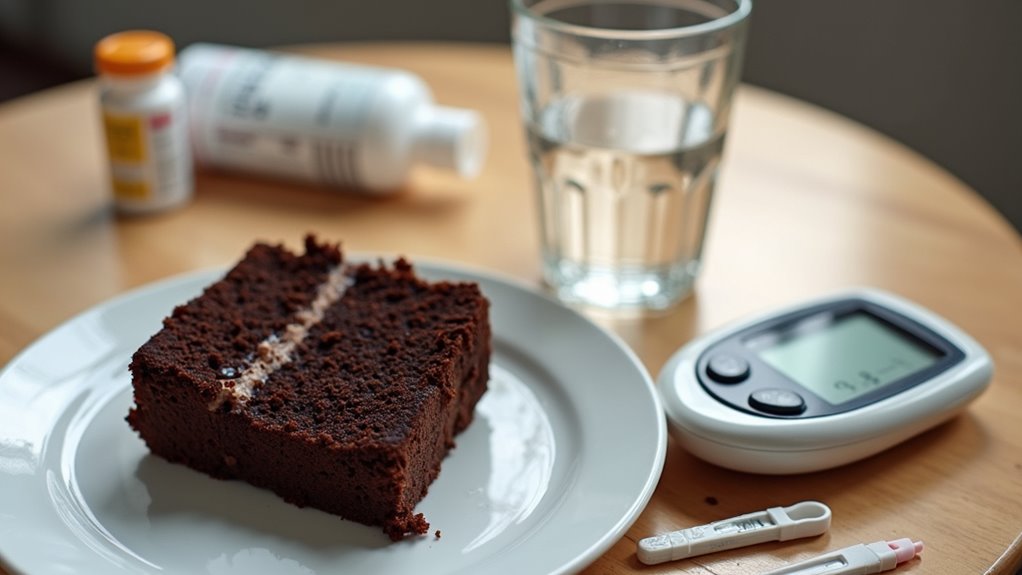According to recent warnings from the Mayo Clinic, certain dietary habits could greatly increase your risk of developing diabetes. The fad diets promising quick fixes might help you drop pounds fast, but they’re not doing your long-term health any favors.
Turns out, there’s limited evidence these trendy eating plans prevent diabetes. Shocking, right?
Let’s talk about what’s actually wrecking your health. High-glycemic index foods. They send your blood sugar on a roller coaster ride that your body just can’t handle forever.
Those processed snacks you love? Loaded with trans fats and high fructose corn syrup. They’re basically diabetes in a convenient, colorful package.
Your Saturday night pizza and ice cream ritual isn’t helping either. High saturated fat intake from dairy and meats considerably raises diabetes risk.
And those sugary sodas? Might as well mainline glucose directly into your bloodstream.
Physical inactivity compounds these problems. Sitting all day and eating junk is a one-way ticket to Diabetesville. Population: growing rapidly.
Family history plays a role too, but unlike your annoying relatives, you can’t avoid your genes. You can, however, control what goes on your plate.
The Mayo Clinic isn’t just doom and gloom – they offer solutions.
Your body relies on insulin production feedback to maintain proper blood sugar levels naturally.
Losing just 5-7% of your body weight can dramatically reduce your risk. That’s only 10-14 pounds for a 200-pound person. Not exactly climbing Everest.
A balanced diet with vegetables, fruits, and whole grains helps manage blood sugar. Fiber is your friend. Your bathroom trips will thank you too.
Schedule regular meals. Your body appreciates consistency. And drink water, not liquid candy.
The consequences of ignoring this advice? Nerve damage. Kidney failure. Heart disease. Blindness. Not exactly a fun future.
The path to diabetes prevention isn’t complicated. Move more. Eat better. Cut the processed crap. Simple steps, really.
Breaking up long periods of sitting is essential, as experts recommend you stand or walk every 30 minutes to help maintain better blood sugar control.
Healthcare professionals advise that recognizing early warning signs like extreme hunger and increased thirst can lead to timely intervention and better management of diabetes risk.
Your pancreas is begging you to listen. Maybe it’s time you did.








